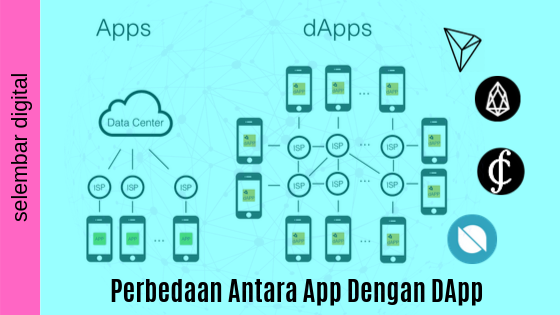
The word “app”, or application for short, is a term that has dominated the online arena, both mobile and desktop, for several years. The applications are convenient to use, they provide many useful features and are easy to download. However, another trend has developed over the last two years in the form of decentralized application development.
Decentralized Applications are computer or smartphone-based applications that run on distributed computing systems, or blockchains. Mostly and foremost on the Ethereum Blockchain, DApps run on Smart Contracts which execute orders based on given terms with guaranteed immutability.
DApps are just like apps in their function, as they provide services ranging from gaming to financial transactions. However, unlike most regular applications that run on servers and can work without an internet connection, Dapps cannot be disconnected from the internet, because they will just stop functioning. Most Dapps share the following characteristics - they are open source, they keep all records of their operations on the blockchain, and they work on tokens.
The last two years have seen a real boom in Dapps appearing in the market with an increasing number of blockchain-based projects developing them for various industries and market sectors. The number of Dapps in the market has exceeded 2,500 with the number of daily Dapps users exceeding 96,000. The number of transactions generated by Dapps per day exceeds 4.4 million 11,500 smart contracts involved. More importantly, Dapps is a profitable business that generates cash flow of more than $ 21.5 million per day, proving that Dapps popularity and applications are increasing.
Developing a Dapp is not a very simple task, because the application requires an infrastructure to operate. There are a number of platforms for developing Dapps currently available on the market.
Tron - a blockchain-based decentralized platform for digital content entertainment systems with cost-effective distributed storage and digital content sharing technology.
Credit - an open source, fully decentralized platform with a blockchain chain with smart contracts that aims to create high-performance applications using a unique PoA (Proof of Agreement) algorithm based on the conception of BFT.
EOS - an open-source blockchain protocol introduced in May 2017, with fast transaction speeds and flexible utility. It has been widely recognized as the first performing blockchain platform for businesses.
Ontology - a high-performance public blockchain and distributed trust collaboration platform that helps users manage their own data and enables blockchain-based multi-dimensional authentication provided by global metrics.
Looking to Future
The growing popularity of DApps and the increasing volume of investment being made in them are living proof that this new segment is proving its value and benefits to both the casual user and the business. With the platform for deploying Dapps up and running, the coming years could see the replacement of most of the applications we know today with Dapps.